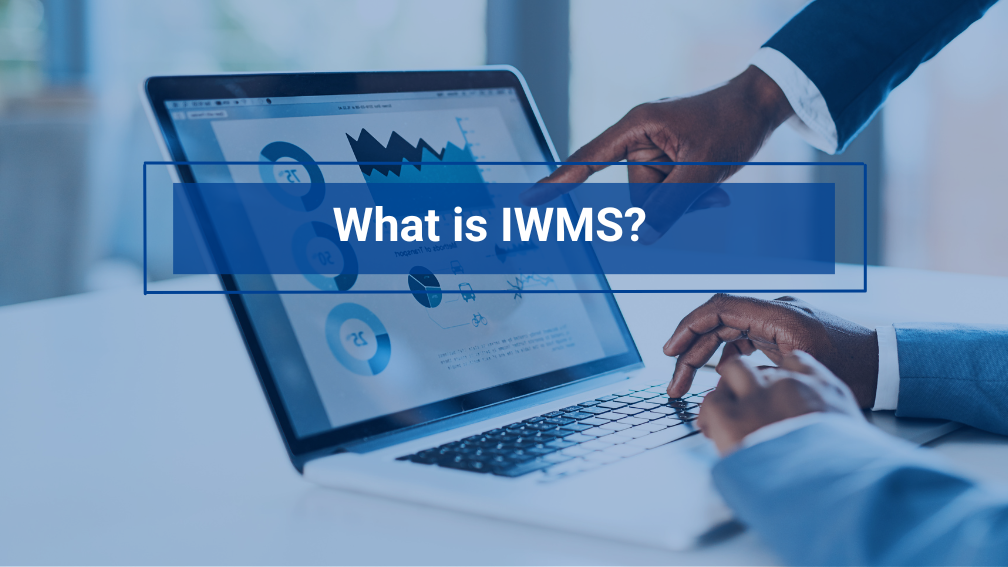What is IWMS: Workplace Management Software
What is IWMS?
Integrated Workplace Management Systems, also known as IWMS software, has emerged as a comprehensive tech stack solution that streamlines and automates various facets of corporate workplace management.
IWMS refers to a workplace software platform that integrates and centralizes multiple functionalities related to real estate and facilities management of an organization’s physical assets, facilities, and resources. IWMS cloud-based software platforms bring together diverse modules such as real estate portfolio management, lease administration, space planning, maintenance, sustainability, and more. By consolidating these functions into a single, integrated platform, IWMS offers a holistic view of the organization’s entire workplace ecosystem.
The Key Benefits of IWMS
One way to think about an IWMS platform is as your digital workplace concierge. It’s a place for real estate managers and workplace leaders to leverage a comprehensive suite of collaborative tools that enable the physical workplace. With flexible work arrangements, establishing a sound corporate real estate strategy sets the foundation for improved business efficiencies, cost savings opportunities, and a centralized system for team collaboration.
Implementing an IWMS tool yields numerous advantages for organizations across different industries. From understanding facility usage efficiency, to predictive maintenance across spaces and financial reporting — IWMS can empower increased productivity in the workplace. Let’s explore some of the core functional benefits that IWMS brings to the table:
Lease Management
IWMS software provides a comprehensive lease administration module that efficiently handles everything from lease agreement creation and tracking to critical date notifications and reporting. This streamlines the leasing process, reduces manual errors, and ensures compliance with lease terms
Space Management & Utilization
With IWMS, organizations gain visibility into their space utilization metrics, enabling them to make informed decisions regarding workspace design, allocation, and utilization. Through space planning and optimization modules, organizations can maximize the efficient use of their facilities, reduce wasted or unused space, and accommodate changing workforce needs.
Facilities Management
IWMS offers modules dedicated to the proactive management of assets and facilities. It enables organizations to schedule and track maintenance tasks, manage work orders, and monitor asset performance. This ensures efficient upkeep, reduces downtime, and prolongs the lifespan of critical infrastructure.
Asset Management
In an IWMS setup, Asset Management modules offer a holistic approach overseeing asset lifecycles. This includes inventory, tracking, maintenance schedules, depreciation calculations, and performance monitoring. Centralizing these processes ensures efficient resource allocation and informed decisions about asset utilization, maintenance, and upgrades.
Sustainability & Energy
IWMS supports organizations in meeting their sustainability goals and adhering to regulatory compliance. The system helps monitor energy- related costs, consumption, water usage, waste management, and carbon emissions. By facilitating sustainability initiatives, organizations can lower their environmental footprint and align with industry standards.
Capital Project Management
Within an IWMS involves integrating enterprise resource planning, capital planning, and coordination with service providers to streamline and optimize large-scale initiatives. This facet oversees the planning, execution, and monitoring of significant projects, ensuring alignment with organizational goals and financial strategies.
As a whole, IWMS serves as a hub for integrating various service providers, fostering seamless communication and coordination among teams, contractors, and vendors involved in the project. This collaboration enhances transparency, minimizes delays, and supports the timely completion of projects within budgetary and regulatory frameworks.
Moreover IWMS facilitates data-driven decision-making by providing comprehensive reporting and analytics capabilities. Organizations can generate insightful reports on occupancy rates, maintenance costs, energy consumption, and other key metrics. This empowers different departments and various stakeholders to identify inefficiencies, optimize operations, and reduce costs.
IWMS Implementation Planning
Understanding what IWMS is, and how it supports your business, first requires strategic planning across numerous departments to take into consideration your future real estate needs. Implementation of IWMS requires the successful integration of this robust system requires careful planning and execution:
- Assess You: Before embarking on an IWMS implementation, conduct a thorough analysis of your organization’s specific requirements. Identify pain points, prioritize key functionalities, and define clear goals for the system.
- Select the Right Vendor: Engage with reputable vendors who specialize in IWMS solutions. Evaluate their track record, industry experience, customer testimonials, and the comprehensiveness of their offering.
- Customization and Configuration: Work closely with the vendor to customize and configure the IWMS to align with your organization’s unique needs. Ensure the system can accommodate both current and future business requirements.
- Change Management and Training: Implementing IWMS requires effective change management and training programs. Engage all stakeholders, communicate the benefits, and provide comprehensive training to ensure widespread adoption and usage.
- Continuous Improvement: Regularly review and assess the performance of your IWMS. Leverage usage data and feedback to identify areas for improvement and further optimization.
IWMS Compared to CAFM
IWMS (Integrated Workplace Management System) and CAFM (Computer-Aided Facility Management) serve as robust solutions for managing facilities and reactive maintenance orders but differ significantly in their scope and functionality.
Overall, IWMS offers a broader, integrated approach by combining CAFM functionalities with additional modules covering lease management, capital project management, sustainability, and more. IWMS acts as a comprehensive platform that integrates diverse facets of facility and real estate management, providing a holistic view of the entire workplace ecosystem.
IWMS in Practice
With the increasing complexity of workplace management, IWMS has emerged as a vital tool for organizations seeking to optimize their operations, drive efficiency, and enhance the overall employee experience. By centralizing various functions and offering comprehensive insights, IWMS empowers businesses to make data-driven decisions, streamline workflows, minimize costs, and ensure regulatory compliance. As workplaces evolve, embracing IWMS becomes crucial to stay ahead of the competition and create a productive and sustainable work environment.
Lease Accounting Resources
Check out our resource hub. We have the templates, spreadsheets, and calculators to help you manage entire lease lifecycle.
